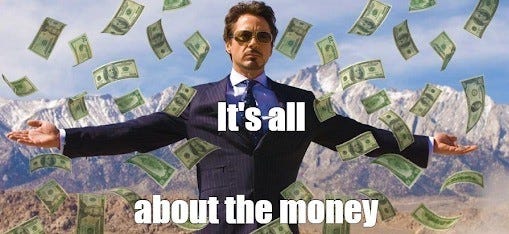Coke v/s Thums Up: Who Won?
Coca-Cola wasn't always India's favourite beverage brand. Here's the story of how it managed to rule out competition.
What do you think of when you hear the word saazish? A crazy villain from some TV show or film? Well sometimes, saazish takes place in the business world too.
Here's one such saazish that helped Coca-Cola gain approx. 80% market share in India!
For most of us, Coca-Cola has always been a part of our lives. But has it always been so?
The company first entered India in 1950. But it was exiled for around 17 years, from 1977-1993.
What, why this vanvaas?
Before 1974, foreign companies would take their entire profits back to their home countries. This was draining India's foreign exchange reserves. Something had to be done to stop this drainage.
And so in 1974, the Indian government introduced the Foreign Exchange Regulation Act (FERA) to reduce this depletion of India's meager foreign exchange reserves.
The new law asked foreign companies that sold consumer goods to dilute their stake in their Indian subsidiaries to 40%! By doing this, the government ensured that most of the wealth generated by these companies would stay in India.
This was great news for India's financial institutions and investors as they would now get to buy shares of these companies.
However, for Coca-Cola, diluting the stakes was not an option. The company probably thought that it would now have to share its most closely guarded secret, its secret Coca-Cola recipe, with other stakeholders. And it couldn't bear this thought. So, it decided that dhandha jaye but secret na jaye (even if the business goes, the secret should be well protected), and packed up its bags.
And just like that, India lost its favourite beverage overnight.
But, some Indian businessmen saw this as a great opportunity. After all, one man's loss is another's gain. So, many different variations of cola suddenly sprung up in the country, including one that was created and marketed by the Indian government itself!
However, only one managed to truly capture and rule the Indian audiences' taste buds and hearts: Parle's Thums Up!
So much so, that even when Coca-Cola returned to India (after the government once again opened up foreign investments) in 1993, people continued to pick Thums Up over Coke.
And, well. This was not what Coca-Cola executives had expected. They thought they would be welcomed with open arms and people would soon forget all the other cola substitutes. But since that clearly didn't happen, they decided to channel their inner villains and go the saazish way.
At that point in time, Parle owned only four bottling plants, which would bottle and sell its cold drinks. Most other bottling plants in India were owned by franchisees that sold the products. Coca-Cola knew that a cold drink business couldn't survive without these plants, so it teamed up with most bottlers, except of course the four that Parle owned. But why would they take Coca-Cola’s side?
As a result, Parle did not have enough bottlers to sell the number of drinks it usually did. This would mean a massive loss for the company.
What next? Parle Bisleri owner Ramesh Chauhan decided to sell Thums Up, along with the company's other cold drink brands, Limca, Maazaa, Citra and Gold Spot, to Coca-Cola for a whopping $60 million! Thums Up had an 85% market share at the time.
After acquiring Thums Up and successfully eliminating its competition, Coca-Cola decided to focus only on its homegrown beverages. But India longed to "taste the thunder" and Thums Up continued to be India's favourite beverage. So, Coca-Cola had no option but to keep Thums Up alive. It is currently the second most-consumed drink in India after Sprite.
While Thums Up is a local favourite, why is Coca-Cola shying from introducing the brand to other larger economies? What are your thoughts?
Fun Fact: Did you know that Parle G, Frooti and Bisleri, which are all Parle products, are not owned by the same group of companies? (Yes, there's an interesting story here too!)
Share this with your friends on WhatsApp or Twitter. Help us grow, won’t you? :)
If you are coming here for the very first time: Don’t forget to join us on WhatsApp to get daily updates! 👇


It was the Janta party Govt that brought the 40% policy and not Indira Gandhi